Moana (1926)
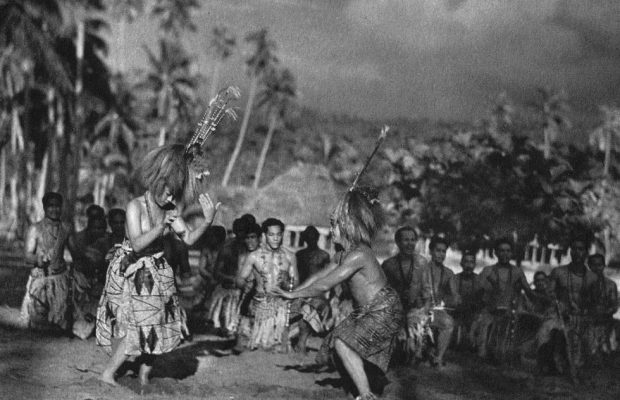
National Film Society – Toronto Branch presented Moana (1926) on Monday, April 10, 1950 as part of the Season 2 Main Series, Programme 9.
9th EXHIBITION MEETING, 1949-50 SEASON
MONDAY, April 10th, 1950 8.15 p.m.
Royal Ontario Museum Theatre
NATIONAL FILM SOCIETY TORONTO BRANCH
TO THE MEMBERS: If you cannot attend this last meeting on Easter Monday, we should be obliged if you would telephone the Secretary not later than April 8 (MI 1469) between 5.30 and 7.00 p.m. so that complimentary cards may be issued to some of the people who have been on our waiting list this Season.
IN THE AUDITORIUM from 7.55 to 8.09 p.m. – a talk by Robert J. Flaherty on disc
We are proud to be able to present to members the opportunity to hear the voice of the famed documentary director describing in his own words some of his vivid experiences as an explorer-film maker.
To ensure audibility for early-comers, doors will be closed for the duration of the recording; members not arriving for the talk may be interested in viewing the educational book publisher’s display in the lobby.
______________________________________________________________________
The People Between National Film Board of Canada 1949 Running Time: 22 mins.
DIRECTOR & PHOTOGRAPHER: Grant McLean
PRODUCER: Tom Daly
EDITORS: Tom Daly and George Brandt
MUSIC: Lou Appelbaum
A timely, informative and moving film made from original material shot in China. The people between are, of course, the inarticulate, suffering millions caught between Chiagn’s nationalists and Mao Tse’s reds; and although events have moved fast since the film was made, the basic situation with which it deals has not altered. Children still starve to death, men and women are too weak to till a soil whose yield at best is bitter and ungrateful. The material, which is excellent, has been superbly edited. The contrast between the palliatives of UNRRA supplies and the real job which can only be done if the Chinese unite to work together (as in the sensational rebuilding of the Yellow River dkykes) is cogently emphasized both in picture and commentary – “three-quarters of the national budget is spent on guns instead of rice.” The People Between also has an outstanding musical score. It is in such a film that one realizes the great importance of a government film service such as the National Film Board. Not only is the Canadian public vividly and dramatically informed about the basic problems of China, but also the world at large may benefit from the same film; and that, by the way, is very good propaganda for Canada, let alone China.
Basil Wright in Monthly Film Bulletin–
British Film Institute Nov. 30 ’49
Il Paradiso Terrestre (Italy, 1946) Source: Museum of Modern Art, N.Y. Running Time: 10 mins.
WRITTEN AND DIRECTED by Luciano Emmer and Enrico Gras
In 1940 Emmer, an Italian painter, his wife and Gras, an early Italian experimentalist in the cartoon film decided to undertake the production of films on art. Their films break new ground for the motion picture. The paintings have not been made the subject of a camera record, they have been used as the raw material for a film. The director has analyzed each fresco and re-assembled its elements into a dramatic sequence which follows the pattern of film editing rather than that of pictorial composition.
Choosing the story of the fall of man as their subject, Emmer and his group used a rudimentary camera with a lens held in place by strings, and filmed The Earthly Paradise based on photographic enlargements of Hieronymus Bosch’s trytich in the Escurial Palace of Madrid. They took approximately 100 shots and then organized them into a cinematic narrative. The result is an essentially dynamic and dramatic film.
The scene of the meeting of Adam and Eve, with the poetic suggestiveness of their mutual astonishment that slowly changes to delight, is created by the juxtaposition of facial and bodily details which do not belong to the figures of Adam and Eve in the painting, but which the magic of montage attributes to them for the duration of the film. The descent of the winged monsters who come to drive Adam and Eve out of the Garden of Eden has amazing dramatic force.
Emmer gives these painted figures a purely cinematic movement instead of a movement derived from the surface composition of the painting. For this reason the whole picture is rarely seen in his films. Renaissance music adds to the inherent dramatic values of this remarkable piece of film-craft.
Condensed from National Board of Review, Oct. 1948
and Lauro Venturi – Italian Films on Art
Picture in Your Mind (U.S.A. 1949) Source: International Film Foundation, N.Y. Running Time: 20 mins.
PLANNED, WRITTEN and DRAWN by Philip Stapp
MUSIC by Gene Forrell
COMMENTARY SPOKEN by Walter Abel
This is the latest work of Philip Stapp, producer of the famous Boundary Lines, shown last Season. Made at the request of the United Nations film unit it draws attention to a disturbing problem: “Why, on our increasingly congested planet, does any cultural group consider its way of life so superior that it feels compelled to impose its code or pattern on other groups, if necessary by force?”
Of the film, the producer has said: “The film affirms the dignity and responsibility of the individual. I want to make films with the double function of presenting the content clearly and at the same time touching the spectator emotionally through carefully controlled visual forms, choreographed camera movement and interlocked music…so that the whole becomes a dance of ideas. It is like composing a music score in which every note is controlled, nothing is left to chance. What does the film say? This is best answered by the narration:
what shall we make of them,
today
and in the future?
Shall one way of life be imposed
on everyone?
Until we become automatons
A world of robot minds?
and enrich all our lives
With the fruits
And the knowledge
Of many histories
many patterns
many songs
and many dances?'”
At the Annual General Meeting (April 24) we will seek authorization to buy a print of Picture in Your Mind to be deposited in the National Film Library in Ottawa for the use of groups across Canada.
ANNOUNCEMENTS followed by INTERMISSION
Moana (U.S.A. 1926) Silent; Source: Museum of Modern Art, N.Y. Length: 7 reels
PRODUCED and DIRECTED by Robert J. Flaherty & Frances H. Flaherty
for Famous Players-Lasky
EDITED and TITLED by Julian Johnston
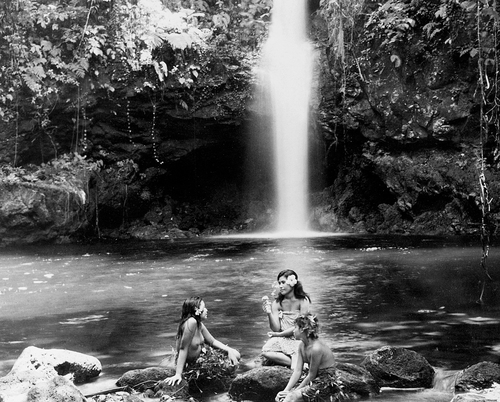
Flaherty, as he says, made his films (Nanook of the North, Moana, Tabu, Man of Aran, Elephant Boy, Louisiana Story) because he was by nature an explorer. He was interested in the conditions and the peoples that he filmed; the themes were inevitably alike because the necessities of primitive life do not change: they all represented the struggle of primitive man to come to terms with his environment. His method is to live among the people for a year or two until the story is told “out of himself” and in filming it to reveal dramatically the essential reality of that life (i.e. to interpret in describing.)
When making Moana, Flaherty lived for two years among the South Sea Islanders. He describes it as the greatest experience of his career. He settled his family on the Samoan island of Safune because of its large cave with a spring of cold water, where he could develop his negative. He looked for the elements of conflict and struggle which his previous film Nanook of the North had taught him were essential to the dramatization of real life. At first his search was long and fruitless for Safune afforded no filmable fight for food and shelter. The Flahertys perforce decided that their picture must record “fa’a-Samoa,” the complex weave of custom, ceremony, and tabu which forms the social texture of Samoan life. And in thus adhering to the truth of the locale, Flaherty found his dramatic conflict after all, when he showed that Samoans, free from the painful struggle with nature, invented pain to demonstrate their manhood; the climax of Moana is the ritual of the Tattoo.
Grierson remarks: “No director has the same respect as Flaherty for the camera; indeed very few of them even trouble to look through the camera while it is shooting their scenes. Flaherty, in contrast, is always his own “first cameraman.” He spoke almost mystically of the camera’s capacity for seeing beyond mortal eye to the inner qualities of things. …No man of camera, to my knowledge, can plan so curiously, or so bewilderingly anticipate a fine gesture or expression.”
A musical score from phonograph recordings will accompany Moana.
MEMBERS’ EVALUATIONS 13 evaluations were received covering the Grass programme
It was generally felt that this programme was one of the best shown this Season – well-balanced and entertaining throughout. Grass was commended for its highly interesting content; more Chaplins were requested; Rodin and Waverley Steps were thought “fine.” Two evaluators detected derivative qualities in Waverley Steps; one thought it self-conscious, another stated that “it is not a good documentary film.”
The reproduction of sound as deplored. This was not the fault of the films. Unfortunately the position of the new speaker recently installed is not satisfactory. Members’ complaints have been brought to the attention of the Museum and it is hoped that the original high quality sound will return for our last Exhibition of the Season.
We wish to thank members who have been faithful in sending in evaluations. They have been most helpful and will serve a valuable purpose in assisting us in planning films for next Season. Moreover they will guide 23 Societies in Canada planning programmes.
ADDITIONAL MATERIAL MAILED TO MEMBERS
- We would appreciate members answering a questionnaire concerning this Season’s programmes and asking for their suggestions for next Season. Please leave them in the evaluation box in the lobby or mail to 233 Grenadier Road.
- A list of films under consideration for next Season accompanies the questionnaire.
- Members wishing to rejoin next Season are urged to return the advance application form requesting membership in the Society’s 1950-51 Season. These may either be mailed to 233 Grenadier Road or left in the reservation box in the lobby at the 9th Exhibition Meeting.
- An article on Canada’s feature film production compared with production in other lands is being circulated to members for their information. This Society is most concerned that Canada is the only country of its size in the world that does not have an industry producing feature films about and for its people.
FILMS TO WATCH FOR
- Rubens: Henri Storck’s and Paul Haesaert’s new film – at the Toronto Art Gallery on Wednesday, April 5th
- Man and His Sin (Un Homme et Son Peche) with English titles – feature film made in Quebec, an award winner-Canadian Film Awards 1948 coming to Toronto soon
- They Live by Night – an R.K.O. recent experiment made by Nicholas Ray should be in Toronto soon. DO NOT MISS IT!
- The Scoundrel with Noel Coward has been re-issued; coming to the Towne Cinema
- The Last Days of Dolwyn – Dame Edith Evans and Emlyn Williams soon at the International Cinema

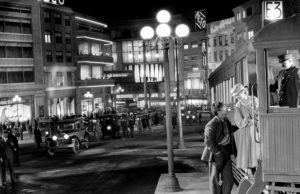
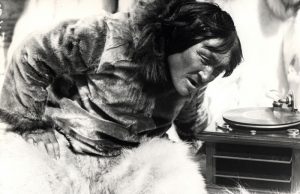
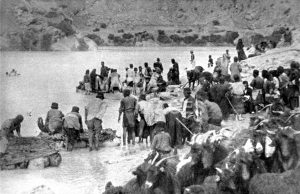






Leave a Reply